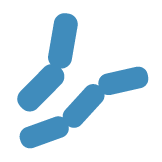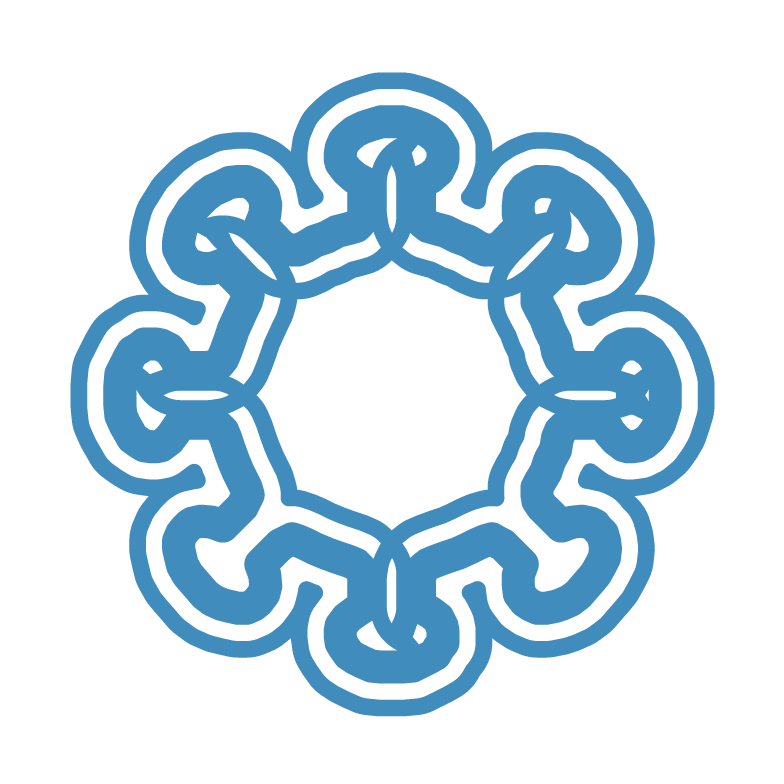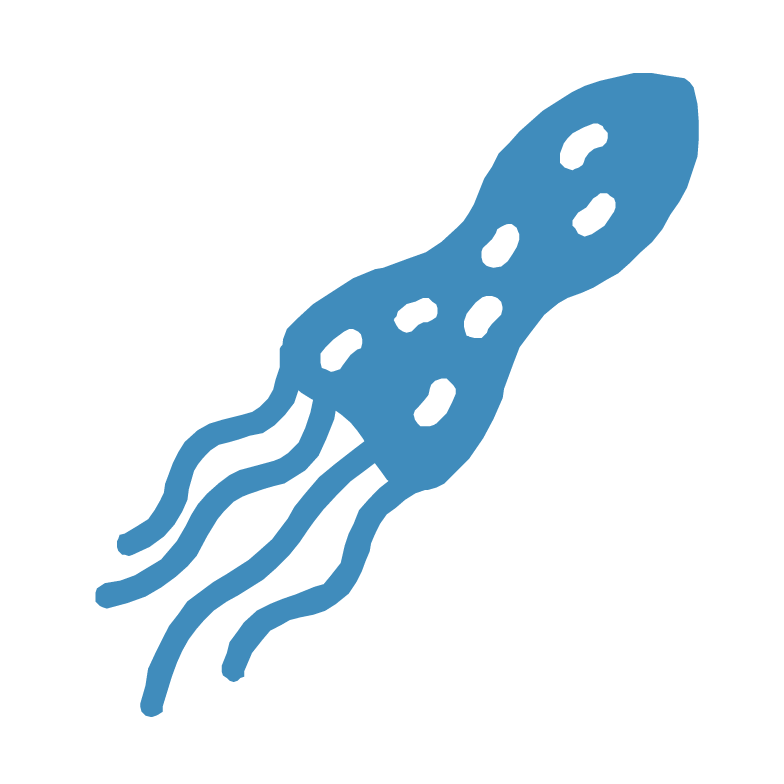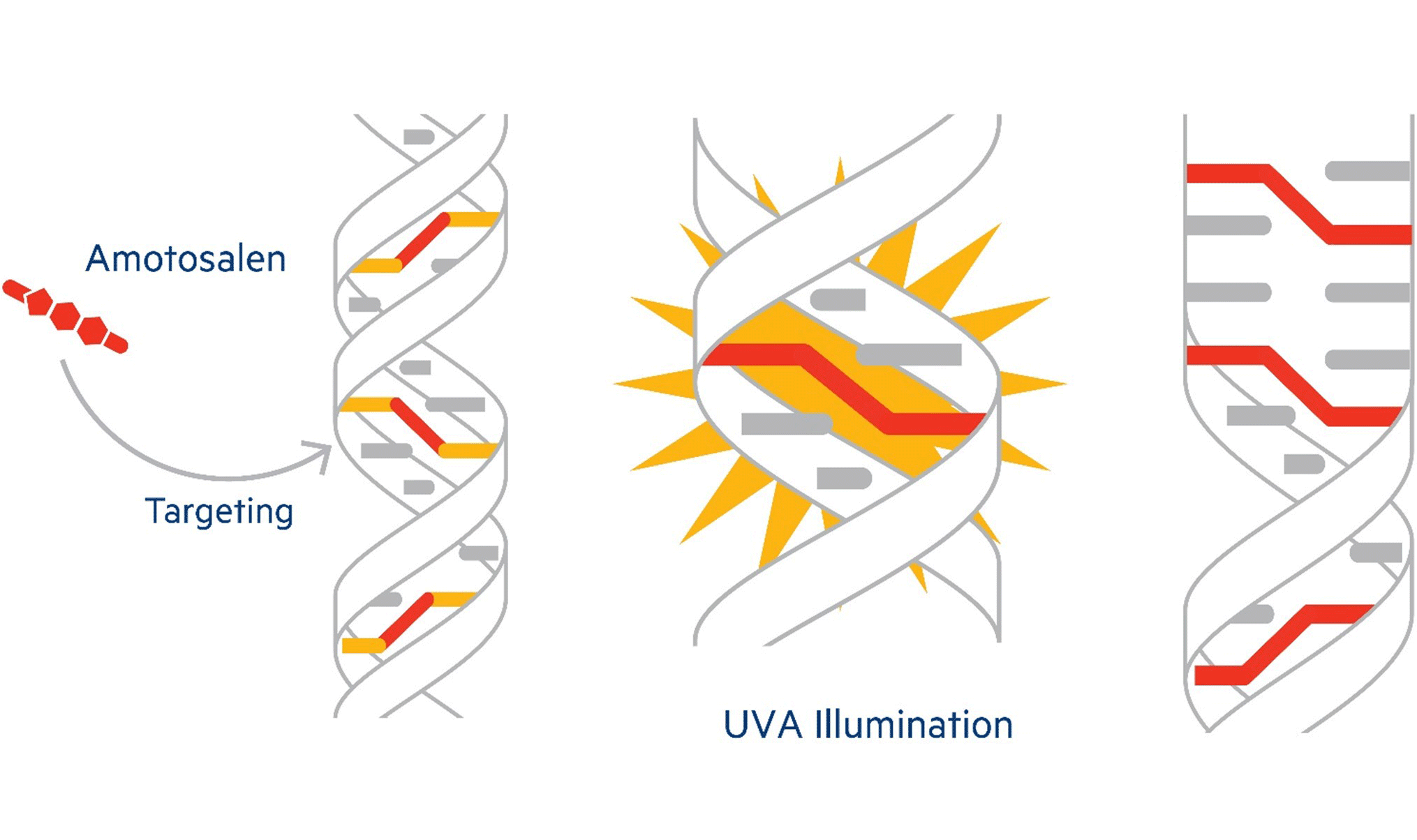INTERCEPT Pathogen-Reduced Platelets
Proven Efficacy Against over 40 Clinically-Relevant Pathogens1What are INTERCEPT Platelets?
The INTERCEPT Blood System (pathogen-reduction with psoralen/UVA treatment) provides a proactive, FDA-approved approach to reduce the risk of transfusion-transmitted infection (TTI) in platelets, including sepsis due to bacterial contamination.1
The INTERCEPT® Blood System for Platelets uses amotosalen (a psoralen) and UVA light to cross-link nucleic acids irreversibly, thereby inactivating a broad spectrum of viruses, bacteria, and parasites, as well as donor T-cells (Figure 1).1 After platelet processing by the blood collection establishment, residual amotosalen is negligible and the platelet product has normal functional and storage characteristics.1 The INTERCEPT Blood System has been shown to be effective at reducing the risk of transfusion transmission of known pathogens, such as cytomegalovirus (CMV),1,2 and certain emerging pathogens, such as Zika virus.3
Additionally, the INTERCEPT Blood System inactivates donor T-cells, is an FDA (Food and Drug Administration) approved alternative to gamma irradiation for the prevention of transfusion-associated graft-versus-host disease (TA-GVHD), and meets the AABB standard 5.19.4 for prevention of TA-GVHD in platelet components.4
Table 1: Broad spectrum of pathogens inactivated by the INTERCEPT Blood System for Platelets


GRAM-NEGATIVE BACTERIA
Klebsiella pneumoniae†‡
Yersinia enterocolitica†‡
Escherichia coli†‡
Pseudomonas aeruginosa†‡
Salmonella choleraesuis†‡
Enterobacter cloacae†‡
Serratia marcescens‡
GRAM-POSTIVE BACTERIA
Staphylococcus epidermidis†‡
Staphylococcus aureus†‡
Streptococcus pyogenes†‡
Listeria monocytogenes†‡
Corynebacterium minutissimum†‡
Bacillus cereus (vegetative)†‡
Lactobacillus species†‡
Bifidobacterium adolescentis†
Propionibacterium acnes†‡
Clostridium perfringens (vegetative)†‡


ENVELOPED and
NON-ENVELOPED VIRUSES
HIV-1†‡, HIV-2†
DHBV (model for HBV)†‡
BVDV (Model for HCV)†‡
HTLV-I†
HTLV-II†
WNV†‡
CMV†
Chikungunya†‡
Dengue†‡
Influenza A†
Bluetongue Virus†‡
Calicivirus†‡
Adenovirus†‡
SPIROCHETES
Treponema pallidum†‡
Borrelia burgdorferi†‡


PROTOZOA
Trypanosoma cruzi†‡
Plasmodium falciparum†‡
Babesia microti†‡
Leishmania mexicana†
LEUKOCYTES
Human T-Cells†‡
† pathogen reduced Amicus apheresis platelets in PAS-3
‡ pathogen reduced Trima apheresis platelets in 100% plasma
Amotosalen, a synthetic psoralen, was selected for use in the INTERCEPT Blood System for pathogen reduction from a group of over 100 psoralens due, in part, to its enhanced nucleic acid binding when exposed to UV light, in comparison to other psoralens.5,6 By binding nucleic acids, INTERCEPT treatment blocks replication of viruses, bacteria, parasites, and T-cells, rendering them inactive. Platelet function is not substantially impacted by this process.1
Figure 1: Mechanism of action of the INTERCEPT Blood System
(Left) Amotosalen: A photoactive psoralen-derivative targets nucleic acids and docks between the base pairs.
(Center) Exposure to UVA light activates amotosalen to form covalent bond crosslinks to DNA and RNA
(Right) Crosslinks render pathogens inactive by inhibiting transcription, translation, and replication of DNA and RNA.

The INTERCEPT Blood System Processing Set and Illuminator

Toxicology studies have shown wide safety margins for amotosalen and its photoproducts. Incubation with a compound adsorption device (CAD) further reduces levels. Once this is complete, the platelets are transferred to a final bag for distribution to the hospital and are transfusion ready.
The INTERCEPT Blood System provides robust inactivation, reducing risk due to:
- Bacteria frequently implicated in septic transfusion reactions
- Certain emerging pathogens, such as chikungunya and dengue viruses
- Established threats such as HIV, HBV, HCV
- T-cells implicated in TA-GVHD
There is no pathogen inactivation process that has been shown to eliminate all pathogens. Certain non-enveloped viruses (e.g., HAV, HEV, B19 and poliovirus) and Bacillus cereus spores have demonstrated resistance to the INTERCEPT process. For a full list of pathogens, please refer to package inserts.
1. INTERCEPT Blood System for Platelets [Package Insert]. Concord, CA: Cerus Corporation. 2. Corash, L., et al., Photochemical decontamination of platelet concentrates prevents transfusion induced cytomegalovirus infection. Blood, 1994. 84(Suppl 1): p. 530a. 3. https://www.fda.gov/media/148549/download 4. AABB, Standards for Blood Banks and Transfusion Services 33rd Edition. 2022, AABB: Bethesda, MD. 5. Lin L, Cook DN, Wiesehahn GP, et al. Photochemical inactivation of viruses and bacteria in platelet concentrates by use of a novel psoralen and long-wavelength ultraviolet light. Transfusion 1997;37:423-35. 6. Ciaravino V, McCullough T, Dayan AD. Pharmacokinetic and toxicology assessment of INTERCEPT (S-59 and UVA treated) platelets. Hum Exp Toxicol 2001;20:533-50.